Tackling Biodiversity Loss: The Importance of Sustainable Hunting
Biodiversity is the foundation of life on Earth, providing us with essential resources such as food, clean water, and medicine. However, this intricate web of life is under threat from various human activities, leading to alarming rates of species extinction. One might ask, “What can we do to help preserve our planet’s rich biodiversity?” Enter sustainable hunting—a practice that, when managed correctly, can play a pivotal role in conservation efforts. By striking a balance between wildlife management and community needs, sustainable hunting serves as a beacon of hope in the fight against biodiversity loss.
Sustainable hunting is not merely about the act of hunting; it encompasses a broader philosophy of wildlife management that prioritizes ecological balance. Through regulated hunting practices, we can help control wildlife populations, which in turn protects habitats from overgrazing and degradation. Imagine a world where local communities actively participate in conservation efforts, viewing wildlife not just as resources to exploit but as vital components of their ecosystem. This shift in perspective can lead to healthier landscapes and thriving wildlife populations.
Moreover, sustainable hunting can foster economic opportunities for local communities. By integrating hunting with eco-tourism, communities can generate income while simultaneously contributing to biodiversity conservation. Picture this: a family-run lodge nestled in a scenic landscape, where visitors come not just for the thrill of the hunt, but to experience the beauty of nature and learn about local conservation efforts. This synergy between hunting and tourism can create a win-win situation, benefiting both the environment and the economy.
However, the path to sustainable hunting is not without its challenges. Local communities often grapple with issues such as poaching, habitat loss, and economic pressures that can undermine their conservation efforts. To effectively tackle these challenges, it is essential to establish strong regulatory frameworks that support sustainable practices. By implementing laws and policies that promote responsible hunting, we can ensure that wildlife populations remain healthy and ecosystems stay balanced.
Education and awareness are also critical components in promoting sustainable hunting practices. Through training programs for hunters and public awareness campaigns, we can cultivate a culture of responsibility and stewardship. Hunters who understand the importance of biodiversity and conservation are more likely to make informed decisions that benefit both wildlife and their communities. Imagine a community where hunters are not just participants but advocates for the environment, educating others about the significance of biodiversity.
In conclusion, sustainable hunting offers a multifaceted approach to tackling biodiversity loss. By embracing this practice, we can create a harmonious relationship between humans and nature, ensuring that future generations inherit a world rich in biodiversity. It’s time to recognize the potential of sustainable hunting as a tool for conservation and make conscious choices that support our planet’s health.
- What is sustainable hunting? Sustainable hunting refers to regulated hunting practices that aim to manage wildlife populations and protect ecosystems while supporting local communities.
- How does sustainable hunting benefit local economies? Sustainable hunting generates income through eco-tourism, job creation, and funding for conservation initiatives, providing financial incentives for communities to engage in biodiversity protection.
- What challenges do local communities face in sustainable hunting? Local communities often encounter issues such as poaching, habitat loss, and economic pressures that can hinder their conservation efforts.
- Why is education important in sustainable hunting? Education helps hunters and the public understand the significance of biodiversity and conservation, promoting responsible practices that benefit wildlife and ecosystems.
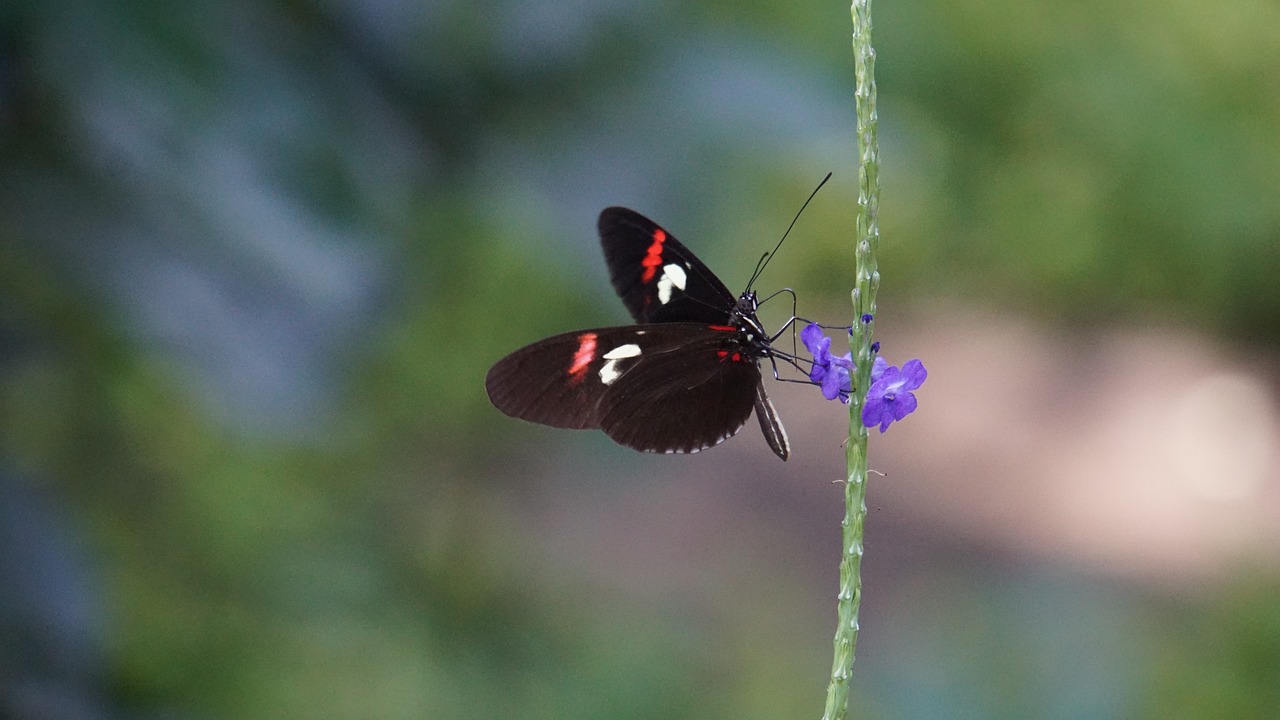
The Role of Sustainable Hunting in Conservation
Sustainable hunting is more than just a recreational pastime; it serves as a critical tool for conservation. Imagine a world where wildlife populations are managed effectively, habitats are preserved, and ecosystems thrive. This is the vision that sustainable hunting helps to realize. By adhering to regulated hunting practices, we can maintain a delicate balance between human needs and the natural world. Sustainable hunting ensures that species are not over-exploited, allowing populations to remain healthy and robust.
One of the primary roles of sustainable hunting in conservation is wildlife population management. Overpopulation can lead to various ecological issues, such as habitat degradation and increased human-wildlife conflicts. For instance, when deer populations exceed their habitat's carrying capacity, they can overgraze vegetation, which in turn affects other species relying on those plants for survival. By regulating hunting, we can help keep these populations in check, fostering a healthier ecosystem.
Moreover, sustainable hunting contributes to habitat protection. When hunting regulations are enforced, it encourages the preservation of natural habitats. Many hunting organizations actively participate in habitat restoration projects, planting trees, and maintaining wetlands to ensure wildlife has a place to thrive. This symbiotic relationship between hunting and habitat conservation is essential for maintaining biodiversity. Not only does it protect the species being hunted, but it also safeguards countless other organisms that share the same ecosystem.
Additionally, sustainable hunting can support ecosystem health. Healthy ecosystems provide numerous benefits, including clean water, air quality, and climate regulation. By promoting responsible hunting practices, we contribute to the overall health of these ecosystems, ensuring they can continue to provide resources for future generations. It’s a classic case of give-and-take: hunters give back to the environment through conservation efforts and, in return, enjoy a sustainable way to connect with nature.
But how do we ensure that hunting remains sustainable? It boils down to effective management and regulation. Governments and conservation organizations must work together to establish guidelines that dictate when, where, and how hunting can occur. This includes setting quotas based on scientific data, which helps to ensure that hunting does not exceed sustainable limits. By involving local communities in these decisions, we can create a sense of ownership and responsibility towards conservation.
In conclusion, sustainable hunting plays a pivotal role in conservation efforts worldwide. It helps manage wildlife populations, protects habitats, and supports ecosystem health. By embracing sustainable practices, we can ensure that future generations inherit a world rich in biodiversity and natural beauty. The essence of sustainable hunting lies in its ability to balance human interests with ecological preservation—an ongoing challenge that requires cooperation, education, and a shared commitment to the environment.
- What is sustainable hunting? Sustainable hunting refers to hunting practices that are regulated and managed to ensure that wildlife populations remain healthy and ecosystems are preserved.
- How does sustainable hunting benefit conservation? It helps manage wildlife populations, protects habitats, and supports ecosystem health, contributing to overall biodiversity preservation.
- What are the challenges of sustainable hunting? Challenges include poaching, habitat loss, and economic pressures that can undermine conservation efforts.
- How can local communities get involved? Local communities can engage in sustainable hunting practices through education, participation in conservation initiatives, and advocacy for responsible hunting regulations.
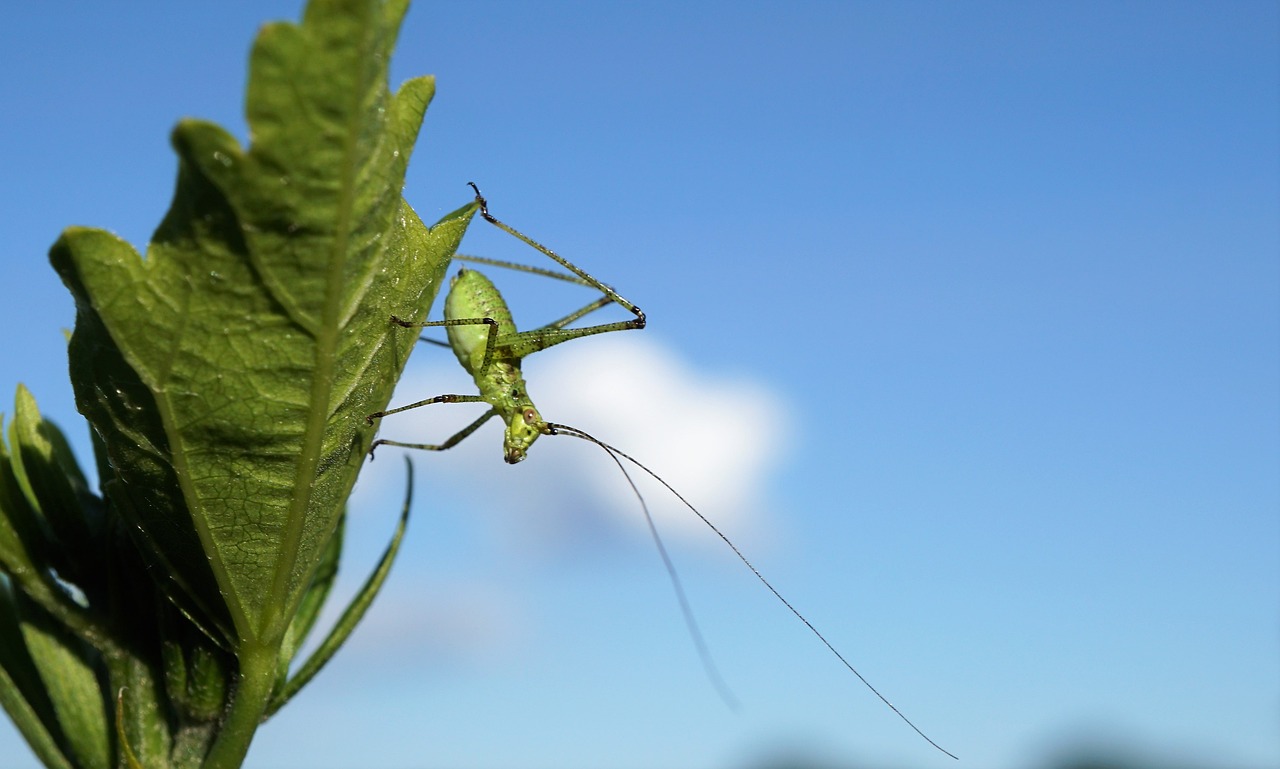
The Economic Benefits of Sustainable Hunting
Sustainable hunting is not just about preserving wildlife; it also plays a crucial role in boosting the economy of local communities. Imagine a small village nestled in the heart of a lush forest, where the sounds of nature blend with the laughter of visitors drawn to the area for its rich biodiversity. This scenario is not just a dream but a reality in many parts of the world where sustainable hunting practices are implemented. By regulating hunting activities, communities can generate significant revenue through eco-tourism, which can be reinvested into conservation efforts and local development.
One of the primary economic benefits of sustainable hunting is the influx of tourism dollars. When hunters visit a region to pursue game, they contribute to the local economy by spending on accommodations, food, and guides. This economic activity can create jobs and support local businesses, including restaurants, hotels, and shops. For instance, a study conducted in Namibia showed that sustainable hunting contributed approximately USD 100 million to the economy annually, demonstrating how hunting can coexist with conservation.
Moreover, sustainable hunting can provide funding for various conservation initiatives. The fees collected from hunting licenses and permits often go directly into wildlife management and habitat preservation programs. This creates a win-win situation: hunters get to pursue their passion, while the funds generated help maintain the ecosystems that support diverse wildlife. For example, in the United States, the Pittman-Robertson Act channels excise taxes on firearms and ammunition into state wildlife agencies, significantly enhancing conservation efforts.
However, the economic advantages of sustainable hunting extend beyond mere financial gain. It fosters a sense of community and stewardship among local residents. When communities are engaged in sustainable practices, they develop a vested interest in preserving their natural resources. This can lead to improved environmental awareness and a collective effort to protect local ecosystems. Furthermore, sustainable hunting often encourages the development of infrastructure, such as roads and communication networks, which can benefit the entire community.
To illustrate the diverse economic impacts of sustainable hunting, consider the following table showcasing various aspects:
| Economic Aspect | Impact |
|---|---|
| Tourism Revenue | Increases local income through visitor spending |
| Job Creation | Provides employment opportunities in guiding, hospitality, and conservation |
| Funding for Conservation | Supports wildlife management and habitat restoration projects |
| Community Engagement | Encourages local stewardship and environmental awareness |
In conclusion, the economic benefits of sustainable hunting are multifaceted and extend far beyond the immediate financial gains. They contribute to the overall health of local economies, promote conservation efforts, and engage communities in protecting their natural heritage. As we navigate the challenges of biodiversity loss, embracing sustainable hunting practices may well be a key component in fostering both economic vitality and ecological balance.
- What is sustainable hunting? Sustainable hunting refers to hunting practices that ensure wildlife populations remain healthy and habitats are preserved, balancing ecological needs with human interests.
- How does sustainable hunting benefit local economies? It generates revenue through tourism, creates jobs, and provides funding for conservation efforts, all of which contribute to the economic well-being of local communities.
- Can sustainable hunting help in conservation efforts? Yes, by regulating hunting, communities can manage wildlife populations effectively and invest in habitat preservation.
- What challenges do communities face with sustainable hunting? Challenges include poaching, habitat loss, and economic pressures that can undermine sustainable practices.

Community Engagement in Sustainable Practices
When it comes to sustainable hunting, the key to success often lies in the hands of the local communities. These communities are not just passive observers; they are the heartbeat of the ecosystems they inhabit. Engaging them in sustainable practices is essential for fostering a sense of ownership and responsibility towards wildlife conservation. Imagine a community where every member understands the delicate balance of nature and actively participates in its preservation. This is not just an idealistic vision; it is a reality in many regions around the world.
One of the most effective ways to engage local communities is through education and awareness programs that highlight the importance of biodiversity and the role of sustainable hunting. These programs can take various forms, from workshops and seminars to hands-on training sessions. For instance, in regions where hunting is a tradition, integrating conservation education into local schools can empower the younger generation to appreciate their natural heritage. By understanding the impact of overhunting and habitat destruction, these young minds can become advocates for sustainable practices.
Moreover, community-led initiatives have proven to be successful in balancing hunting with biodiversity goals. For example, in some African countries, local tribes have developed their own regulations and quotas for hunting specific species. This self-regulation not only helps conserve wildlife populations but also ensures that the community benefits economically from their natural resources. When locals see a direct correlation between sustainable practices and their livelihoods, they are more likely to commit to conservation efforts. It’s a win-win situation; the wildlife thrives, and so do the people.
However, engaging communities in sustainable hunting is not without its challenges. There can be a clash between traditional hunting practices and modern conservation efforts. To bridge this gap, it’s crucial to involve community leaders and respected elders in the conversation. Their influence can help shift perspectives and encourage the adoption of sustainable methods. Additionally, creating platforms for dialogue where community members can express their concerns and suggestions fosters a collaborative atmosphere. This approach not only builds trust but also ensures that conservation strategies are culturally sensitive and widely accepted.
In conclusion, community engagement is a cornerstone of sustainable hunting practices. By empowering local populations through education, self-regulation, and open dialogue, we can create a culture of stewardship that benefits both biodiversity and the communities that depend on it. When people feel connected to their environment and see the tangible benefits of conservation, they are more likely to take action. After all, sustainable hunting is not just about preserving wildlife; it’s about nurturing a harmonious relationship between humans and nature.
- Why is community engagement important in sustainable hunting?
Community engagement fosters a sense of ownership and responsibility towards wildlife conservation, leading to more effective and sustainable practices. - How can education improve sustainable hunting practices?
Education raises awareness about biodiversity and conservation, empowering local communities to make informed decisions about hunting. - What are some successful examples of community-led initiatives?
Many regions have implemented self-regulation of hunting quotas, allowing communities to manage their resources sustainably while benefiting economically. - What challenges do local communities face in sustainable hunting?
Challenges include traditional practices clashing with modern conservation efforts, poaching, and economic pressures that may discourage sustainable methods.
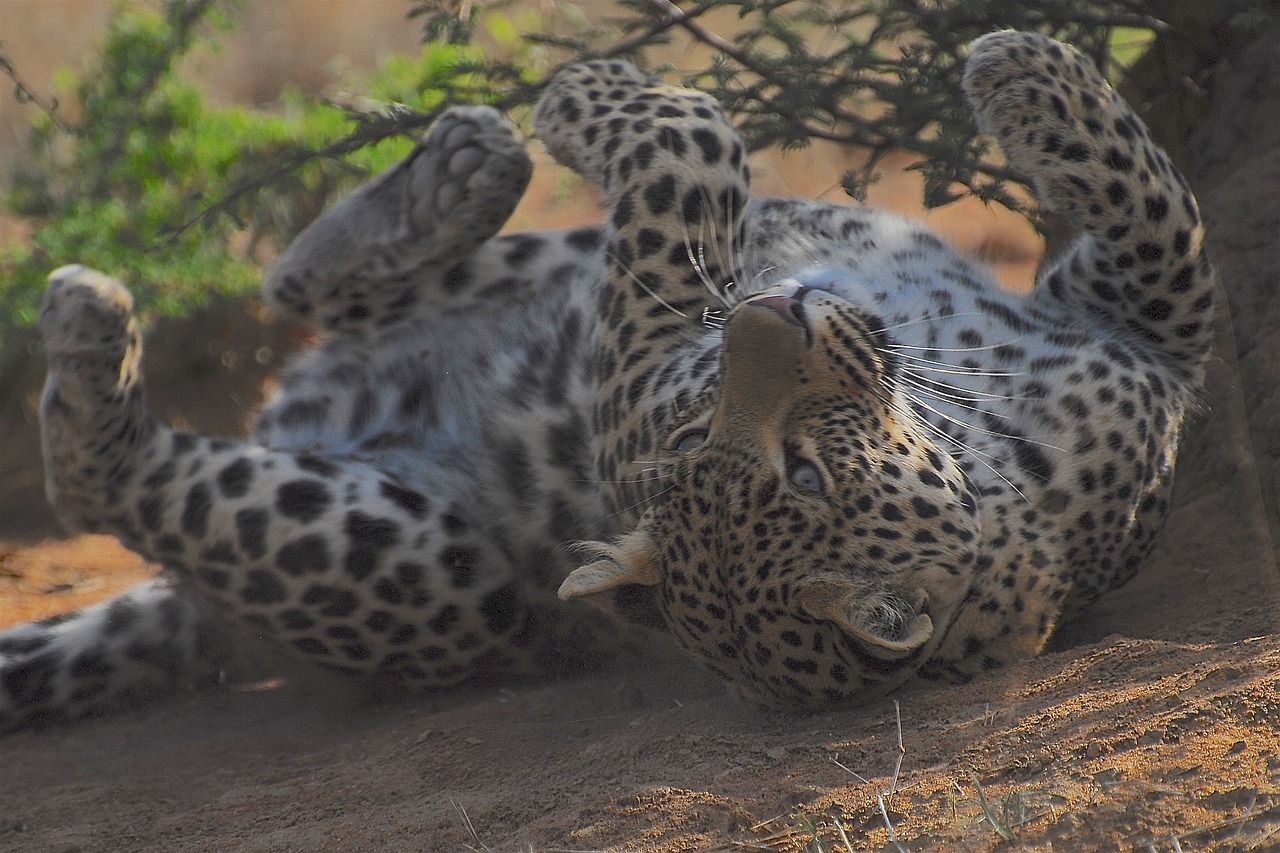
Case Studies of Successful Programs
Sustainable hunting has been a beacon of hope in various regions around the globe, showcasing how well-managed hunting can lead to both ecological preservation and community enrichment. One notable example is the Community-Based Natural Resource Management (CBNRM) program in Namibia. This initiative empowers local communities to manage wildlife resources sustainably, allowing them to benefit economically from hunting while ensuring that wildlife populations remain healthy. As a result, Namibia has seen a remarkable recovery of species such as the black rhino and the desert-adapted elephant, which were once on the brink of extinction.
Another inspiring case is found in the Selous Game Reserve in Tanzania, where sustainable hunting practices have been integrated into broader conservation strategies. Here, regulated hunting fees contribute significantly to conservation efforts, funding anti-poaching initiatives and habitat restoration projects. The Selous Reserve has become a model of success, demonstrating that when communities are involved and benefit directly from wildlife management, they are more likely to protect these resources.
In the United States, the North American Model of Wildlife Conservation stands out as a successful framework. This model emphasizes regulated hunting as a tool for wildlife management, funded by hunters themselves through licenses and taxes on hunting equipment. The revenue generated has been pivotal in restoring populations of species such as the wild turkey and the American bison, which have rebounded from near extinction thanks to these sustainable practices.
To further illustrate the impact of sustainable hunting programs, consider the following table that summarizes key aspects of these case studies:
| Program | Location | Key Outcomes |
|---|---|---|
| Community-Based Natural Resource Management (CBNRM) | Namibia | Recovery of black rhinos and desert-adapted elephants; economic benefits to local communities. |
| Selous Game Reserve | Tanzania | Funding for anti-poaching and habitat restoration; increased local involvement in conservation. |
| North American Model of Wildlife Conservation | United States | Successful restoration of wild turkey and American bison populations through regulated hunting. |
These case studies not only highlight the importance of sustainable hunting in biodiversity conservation but also emphasize the role of local communities in these efforts. When communities are engaged and see tangible benefits from wildlife management, they are more likely to act as stewards of their natural resources. This synergy between conservation and community welfare is essential for the long-term success of biodiversity preservation initiatives.
As we reflect on these successful programs, it becomes clear that sustainable hunting is not just about the act of hunting itself; it's about creating a holistic approach that values ecological balance, economic viability, and community empowerment. By learning from these examples, other regions facing biodiversity challenges can adopt similar strategies to cultivate a sustainable future for both wildlife and local populations.
- What is sustainable hunting? Sustainable hunting refers to hunting practices that are managed to ensure the long-term viability of wildlife populations and their habitats.
- How does sustainable hunting benefit local communities? It provides economic incentives through hunting tourism, job creation, and funding for conservation initiatives, fostering a sense of stewardship among local populations.
- What are some challenges faced in implementing sustainable hunting? Challenges include poaching, habitat loss, and economic pressures that may undermine conservation efforts.
- How can education improve sustainable hunting practices? Training programs and public awareness campaigns can educate hunters and the community about responsible practices and the importance of biodiversity conservation.

Challenges Faced by Local Communities
While the benefits of sustainable hunting are clear, local communities often encounter a series of daunting challenges that hinder their efforts to implement and maintain these practices. One of the most significant issues is poaching, which not only threatens wildlife populations but also undermines the economic viability of sustainable hunting. When illegal hunting occurs, it can lead to a drastic reduction in animal numbers, making it difficult for communities to rely on regulated hunting for their livelihoods. Imagine trying to run a bakery while someone keeps stealing your flour; it's a struggle that many communities face.
Another major challenge is habitat loss. As urbanization and agricultural expansion continue to encroach on natural landscapes, the habitats that support wildlife populations are diminished. This loss not only affects the animals but also the communities that depend on them for food and income. Think of it like a puzzle where pieces are constantly being removed; eventually, the picture becomes incomplete, and the balance of the ecosystem is thrown into chaos.
Moreover, economic pressures can force communities to prioritize short-term gains over sustainable practices. In many cases, local residents may feel compelled to engage in unsustainable hunting or even poaching as a means of survival. The allure of quick cash can be hard to resist, particularly when families are struggling to make ends meet. This cycle of poverty can create a vicious loop, where the very practices meant to sustain the community end up jeopardizing their future.
In addition to these challenges, there are often cultural barriers that can complicate efforts to promote sustainable hunting. For instance, traditional hunting practices may clash with modern conservation principles, leading to conflicts within communities. Bridging the gap between these differing viewpoints requires patience, understanding, and a willingness to engage in dialogue. It's like trying to merge two different musical styles; it takes time to find the right harmony.
Lastly, the lack of education and training on sustainable practices can be a significant barrier. Many hunters and community members may not fully understand the principles of sustainability or the long-term benefits of conserving biodiversity. Without proper training programs and educational resources, communities may struggle to adopt practices that align with conservation goals. It's essential to empower these communities with knowledge, much like teaching someone to fish rather than just giving them a fish.
In summary, while local communities are often at the forefront of sustainable hunting initiatives, they face numerous challenges that can impede their success. Addressing issues such as poaching, habitat loss, economic pressures, cultural barriers, and the need for education is crucial for fostering a sustainable future. By tackling these obstacles head-on, we can help ensure that both biodiversity and local livelihoods thrive.
- What is sustainable hunting? Sustainable hunting refers to hunting practices that are managed to ensure wildlife populations remain healthy while also supporting local communities.
- How does poaching affect local communities? Poaching can deplete wildlife populations, making it difficult for communities to rely on legal hunting for income and food.
- What can be done to educate communities about sustainable practices? Training programs and workshops can provide essential knowledge and skills to local hunters, promoting sustainable practices.
- Why is habitat loss a concern for biodiversity? Habitat loss reduces the space available for wildlife, leading to declines in populations and disrupting ecological balance.
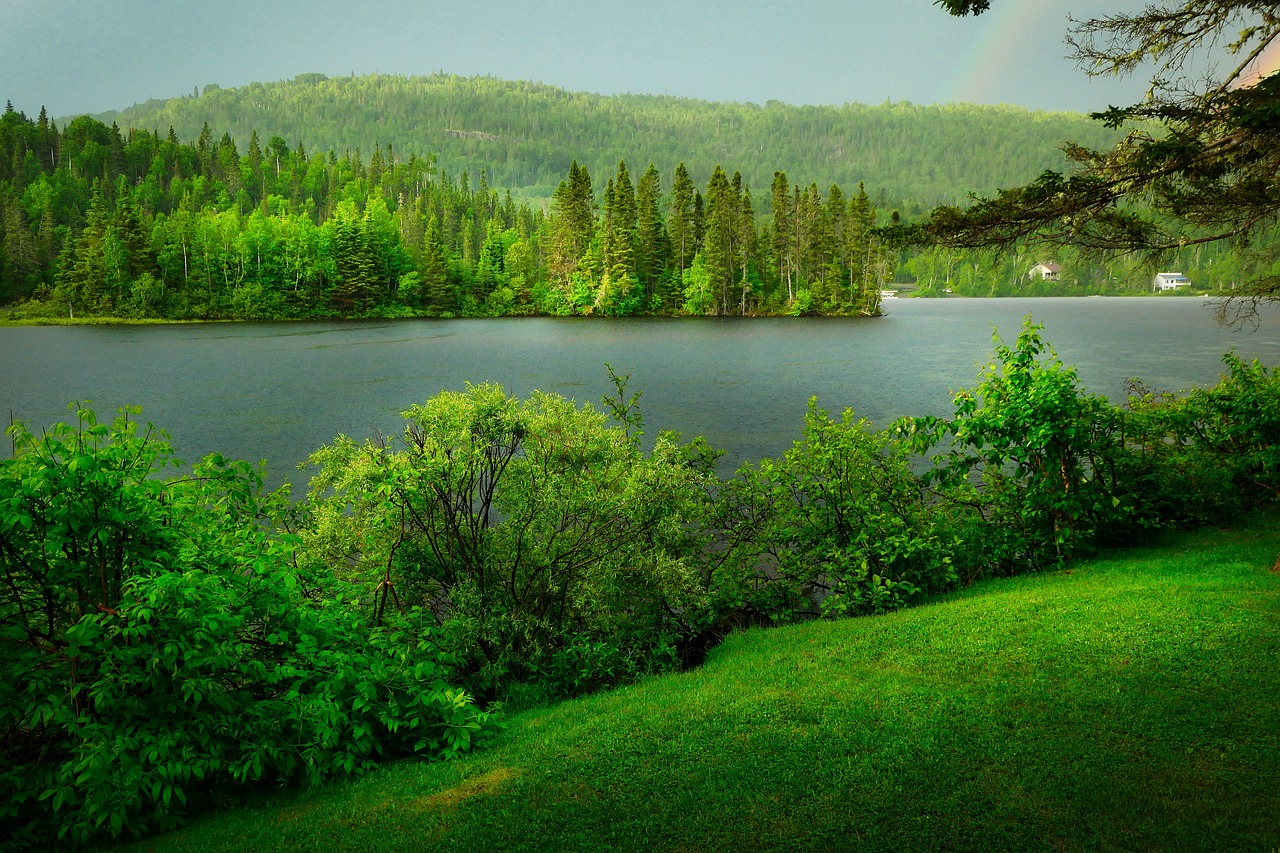
Regulatory Frameworks for Sustainable Hunting
When we talk about sustainable hunting, one of the most crucial aspects to consider is the regulatory frameworks that govern these practices. Regulations are not just bureaucratic red tape; they are essential guidelines designed to ensure that hunting activities occur in a way that is both ethical and sustainable. These frameworks help maintain wildlife populations, protect endangered species, and preserve natural habitats. Without effective regulations, the balance between hunting and conservation could easily tip, leading to biodiversity loss and ecological degradation.
Many countries have implemented comprehensive laws that dictate when, where, and how hunting can occur. For instance, regulations often include:
- Seasonal Restrictions: Hunting seasons are established to allow animal populations to reproduce and recover.
- Quota Systems: Limits on the number of animals that can be hunted each year help prevent over-exploitation.
- Protected Areas: Certain regions are designated as wildlife reserves, where hunting is prohibited to safeguard vulnerable species.
- Licensing Requirements: Hunters may need to obtain licenses, ensuring they are educated about wildlife conservation and hunting ethics.
Moreover, regulatory frameworks often involve collaboration between governments, local communities, and conservation organizations. This collaboration is vital for creating policies that are not only effective but also culturally sensitive and economically viable for local populations. For example, many indigenous communities have traditional hunting practices that are sustainable and should be integrated into modern regulatory frameworks. By recognizing these practices, regulations can be designed to support local customs while promoting biodiversity.
However, the effectiveness of these regulations can vary significantly based on enforcement capabilities and public awareness. In regions where enforcement is lax, illegal hunting, or poaching, can thrive, undermining conservation efforts. This is where public awareness campaigns become essential. By educating hunters and the general public about the importance of sustainable hunting and the laws that govern it, communities can foster a culture of compliance and respect for wildlife.
In addition, international agreements play a significant role in regulating hunting practices across borders. Treaties such as the Convention on International Trade in Endangered Species of Wild Fauna and Flora (CITES) set guidelines for the trade of wildlife and ensure that hunting does not threaten species with extinction. This international cooperation is crucial for protecting migratory species and maintaining biodiversity on a global scale.
In summary, regulatory frameworks for sustainable hunting are multifaceted and require ongoing collaboration, education, and enforcement. By establishing clear guidelines and promoting responsible hunting practices, we can ensure that hunting contributes positively to biodiversity conservation and the well-being of local communities.
Q: What is sustainable hunting?
A: Sustainable hunting refers to hunting practices that are conducted in a manner that maintains wildlife populations and promotes ecological balance while allowing for the harvesting of animals.
Q: How do regulations help in sustainable hunting?
A: Regulations set guidelines for hunting seasons, quotas, and protected areas, ensuring that hunting does not lead to over-exploitation of wildlife and helps preserve biodiversity.
Q: Can local communities participate in creating hunting regulations?
A: Yes! Local communities often have valuable traditional knowledge about wildlife and can contribute to the development of regulations that are both effective and culturally appropriate.
Q: What role do international agreements play in sustainable hunting?
A: International agreements like CITES help regulate trade in endangered species and ensure that hunting practices do not threaten wildlife populations globally.
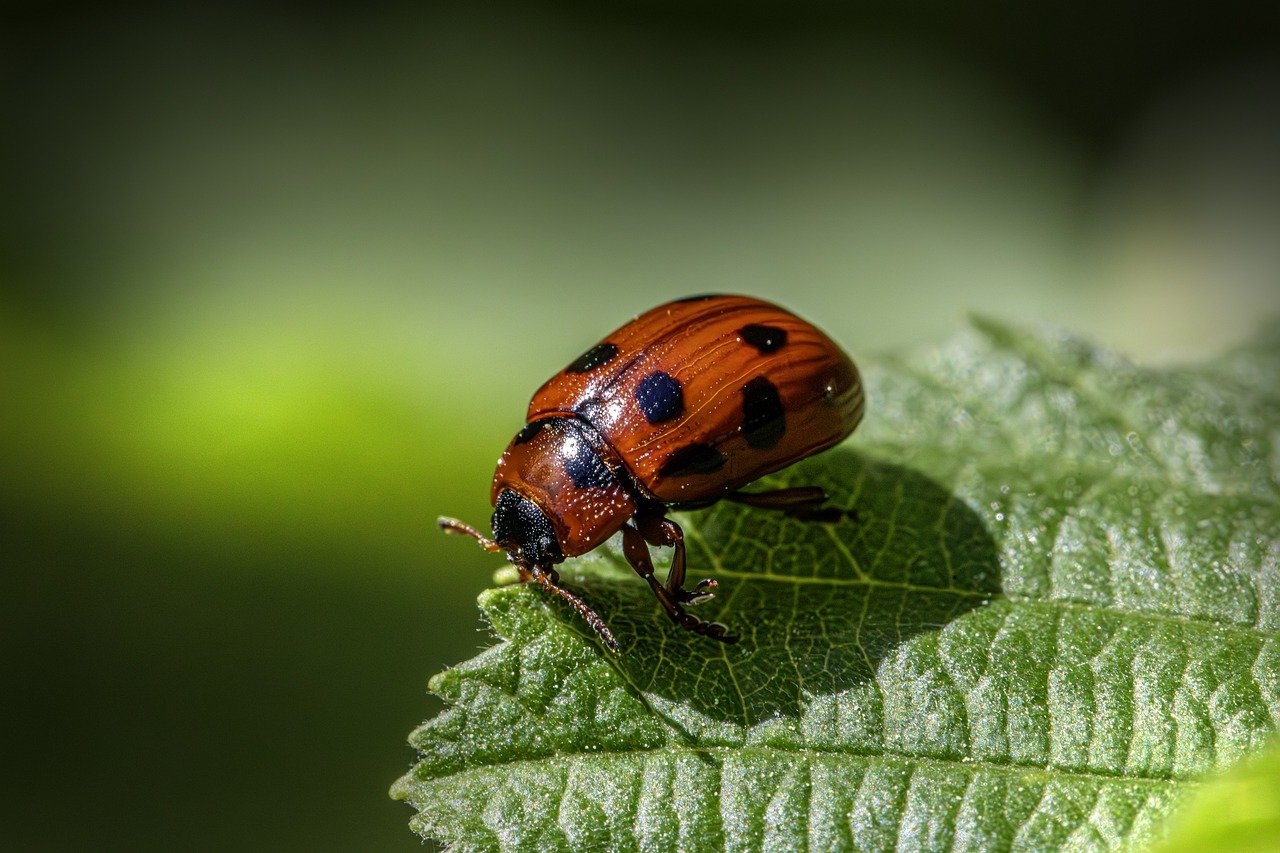
Education and Awareness in Sustainable Hunting
Education and awareness are the cornerstones of promoting sustainable hunting practices. When we talk about sustainable hunting, we're not just discussing the act of hunting itself; we're diving into a complex web of ecological balance, community involvement, and responsible stewardship of our natural resources. Imagine a world where hunters are not just individuals seeking game, but rather informed conservationists who understand the intricate relationships within ecosystems. This shift in perspective is essential for fostering a culture that values biodiversity and sustainability.
One of the most effective ways to enhance education around sustainable hunting is through targeted training programs for hunters. These programs can range from workshops that focus on wildlife management principles to hands-on experiences in the field. For instance, a well-structured training initiative might cover:
- Understanding local wildlife populations and their habitats
- Learning about the impact of hunting on ecosystems
- Recognizing the importance of ethical hunting practices
Such training not only equips hunters with the knowledge they need to make informed decisions but also encourages them to become advocates for conservation within their communities. By fostering a sense of responsibility, these programs can transform hunters into champions of biodiversity, ensuring that hunting practices align with ecological preservation goals.
Moreover, public awareness campaigns play a crucial role in spreading the message of sustainable hunting beyond the hunting community. These campaigns can utilize various platforms—social media, community events, and educational workshops—to engage a broader audience. For example, a campaign might highlight the benefits of sustainable hunting through:
- Informative videos showcasing successful conservation projects
- Interactive workshops that allow participants to learn about local wildlife
- Collaborations with local schools to educate the next generation about biodiversity
Such initiatives can help demystify hunting, presenting it as a responsible activity that can coexist with conservation efforts rather than detracting from them. By raising awareness, we can shift public perception and encourage more people to support sustainable practices.
In addition to formal education and campaigns, community engagement is vital. Local hunters can share their experiences and knowledge with one another, creating a network of support that promotes sustainable practices. This peer-to-peer learning can be incredibly effective, as individuals often trust advice from fellow hunters more than external sources. Furthermore, community-led initiatives can empower local populations, allowing them to take ownership of their natural resources while ensuring that their hunting practices contribute to the overall health of the ecosystem.
Ultimately, the journey towards sustainable hunting is a collaborative effort that requires commitment from all stakeholders involved. By prioritizing education and awareness, we can cultivate a generation of hunters who are not just participants in a sport but stewards of the environment. The more we educate ourselves and others, the better equipped we will be to tackle the challenges of biodiversity loss and ensure that our natural heritage is preserved for future generations.
| Question | Answer |
|---|---|
| What is sustainable hunting? | Sustainable hunting refers to hunting practices that are regulated and managed to ensure that wildlife populations remain healthy and habitats are protected. |
| How does education impact sustainable hunting? | Education helps hunters understand the importance of biodiversity and equips them with the knowledge to hunt responsibly, fostering a culture of conservation. |
| What role do communities play in sustainable hunting? | Communities are crucial in implementing sustainable practices, as local knowledge and engagement can lead to effective conservation efforts and stewardship. |
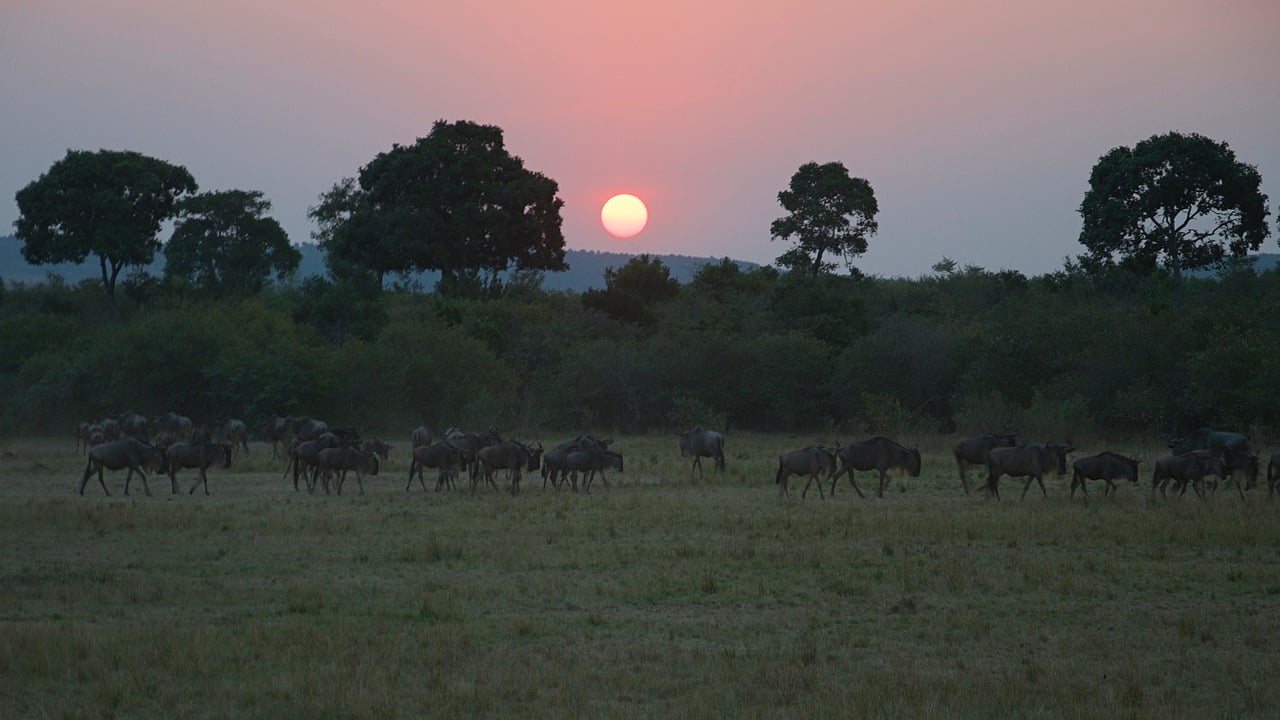
Training Programs for Hunters
Training programs for hunters are essential in fostering a culture of sustainability and responsible wildlife management. These programs equip hunters with the necessary knowledge and skills to make informed decisions that not only enhance their hunting experience but also contribute to the preservation of biodiversity. Imagine stepping into the wild, not just as a hunter, but as a steward of the land—this is the essence of what effective training can achieve.
One of the primary goals of these training programs is to educate hunters about the ecological balance and the importance of various species within their habitats. Through comprehensive courses, participants learn about species identification, understanding animal behaviors, and recognizing the signs of ecological distress. This knowledge is crucial, as it empowers hunters to make ethical choices, such as avoiding overhunting and respecting breeding seasons. Moreover, when hunters understand the role they play in the ecosystem, they are more likely to advocate for conservation efforts.
Many training programs incorporate hands-on experiences, allowing hunters to engage directly with conservation practices. For instance, participants might take part in wildlife surveys or habitat restoration projects. These activities not only enhance their practical skills but also foster a deeper connection to the environment. The more hunters know about the ecosystems they interact with, the more likely they are to support sustainable practices.
In addition to ecological education, training programs often cover the legal aspects of hunting. Understanding local regulations is vital for ensuring that hunting practices remain sustainable and within the law. This includes knowledge about hunting seasons, bag limits, and protected species. By familiarizing themselves with these regulations, hunters can help prevent illegal activities, such as poaching, which poses a significant threat to wildlife populations.
Furthermore, many organizations offer specialized training for different types of hunting—be it big game, small game, or bird hunting. Tailoring programs to specific hunting practices ensures that hunters receive relevant information that can enhance their skills and safety. For example, a program focused on bird hunting might include training on identifying migratory patterns and understanding the impact of habitat loss on bird populations.
To illustrate the impact of these training programs, consider the following table that summarizes key benefits:
| Benefit | Description |
|---|---|
| Informed Decision-Making | Hunters learn to make ethical choices that support wildlife conservation. |
| Legal Compliance | Understanding local hunting laws helps prevent illegal hunting practices. |
| Community Engagement | Programs often involve local communities in conservation efforts. |
| Skill Development | Hands-on training enhances practical hunting skills and safety. |
In summary, training programs for hunters are not just about improving their hunting skills; they are about cultivating a sense of responsibility towards the environment. By emphasizing the importance of sustainable practices, these programs can lead to a generation of hunters who are not only skilled but also passionate advocates for biodiversity conservation. Ultimately, when hunters are educated and engaged, they can play a pivotal role in maintaining ecological balance and supporting local communities.
- What is the primary goal of hunter training programs?
To educate hunters about sustainable practices, wildlife conservation, and legal regulations. - How do these programs benefit local communities?
They promote responsible hunting, which can lead to better wildlife management and economic benefits through eco-tourism. - Are there different training programs for various types of hunting?
Yes, programs are often tailored to specific hunting practices, such as big game or bird hunting. - Can I participate in hands-on conservation activities through these programs?
Many training programs include hands-on experiences, allowing participants to engage in wildlife surveys and habitat restoration.

Public Awareness Campaigns
Public awareness campaigns are essential for fostering a culture of sustainability, especially in the realm of hunting and biodiversity conservation. These campaigns serve as a bridge, connecting the dots between hunters, local communities, and the broader public, all while emphasizing the importance of preserving our natural resources. Imagine a ripple effect: when one person becomes aware of the significance of sustainable hunting, they share that knowledge, inspiring others to think critically about their practices and the ecological balance.
One of the most effective ways to engage the public is through storytelling. Campaigns that highlight personal stories of hunters who practice sustainable methods can resonate deeply with audiences. For instance, a campaign might showcase a local hunter who, after learning about sustainable practices, altered their approach and saw a positive impact on wildlife populations. This narrative not only humanizes the issue but also makes it relatable, encouraging others to follow suit.
Moreover, visual elements play a significant role in these campaigns. Eye-catching graphics, videos, and infographics can simplify complex information, making it accessible to a wider audience. For example, an infographic detailing the benefits of sustainable hunting versus unsustainable practices can quickly convey the message and spark conversations. The more engaging the content, the more likely it is to be shared, creating a buzz around the topic.
Social media platforms have become powerful tools for spreading awareness. Campaigns that leverage platforms like Instagram, Facebook, and Twitter can reach thousands, if not millions, of users. Hashtags such as #SustainableHunting or #ConservationMatters can unify messages and create a community of advocates. Engaging posts, live Q&A sessions, and interactive content can encourage discussions and dispel myths surrounding hunting practices.
Additionally, collaboration with local schools and universities can enhance awareness among younger generations. Educational workshops, seminars, and field trips can provide hands-on experiences that emphasize the importance of biodiversity and responsible hunting. By instilling these values early on, we can cultivate a new generation of environmentally conscious individuals who understand the delicate balance of ecosystems.
To measure the effectiveness of these public awareness campaigns, organizations often utilize surveys and feedback mechanisms. Gathering data on public perception before and after campaigns can provide valuable insights into what strategies work best. This feedback loop allows for continuous improvement and adaptation, ensuring that the campaigns remain relevant and impactful.
In conclusion, public awareness campaigns are not just about disseminating information; they are about building a movement. By engaging communities, utilizing storytelling, and harnessing the power of social media, these campaigns can inspire a collective effort towards sustainable hunting practices. Ultimately, the goal is to create a culture where biodiversity is valued, and hunting is seen as a responsible and sustainable activity that contributes to the health of our ecosystems.
- What is the purpose of public awareness campaigns in sustainable hunting?
These campaigns aim to educate the public about the importance of sustainable hunting practices and their role in biodiversity conservation. - How can I get involved in local awareness campaigns?
Look for local conservation groups or hunting associations that host events or educational programs focused on sustainable practices. - What are some effective strategies for raising awareness?
Utilizing storytelling, engaging visuals, and social media outreach are key strategies that can effectively raise awareness about sustainable hunting. - Can awareness campaigns change hunting regulations?
While awareness campaigns alone may not change regulations, they can influence public opinion and encourage policymakers to consider sustainable practices in legislation.
Frequently Asked Questions
- What is sustainable hunting?
Sustainable hunting refers to hunting practices that are managed in a way that ensures wildlife populations remain healthy and habitats are preserved. It balances the needs of local communities with the importance of biodiversity, allowing for the responsible use of wildlife resources.
- How does sustainable hunting contribute to conservation?
Sustainable hunting plays a critical role in conservation by helping to manage wildlife populations, which can prevent overpopulation and habitat destruction. It also generates funding for conservation initiatives, ensuring that ecosystems remain balanced and healthy.
- What are the economic benefits of sustainable hunting?
Sustainable hunting can significantly boost local economies through eco-tourism, job creation, and funding for local conservation projects. Communities that engage in sustainable hunting practices often see increased income and improved livelihoods, which can further incentivize biodiversity protection.
- How can local communities engage in sustainable hunting practices?
Local communities can engage in sustainable hunting by participating in training programs that educate them about responsible hunting practices and biodiversity conservation. Community-led initiatives can also foster a sense of stewardship, encouraging locals to take an active role in preserving their natural resources.
- What challenges do local communities face in sustainable hunting?
Local communities often face several challenges when implementing sustainable hunting practices, including poaching, habitat loss, and economic pressures. These obstacles can undermine conservation efforts and make it difficult for communities to maintain sustainable practices.
- What regulatory frameworks support sustainable hunting?
Effective regulatory frameworks are essential for promoting sustainable hunting. These laws and policies help ensure that hunting is conducted responsibly, with established quotas and protected areas that support biodiversity conservation while allowing for regulated hunting activities.
- Why is education important in sustainable hunting?
Education is crucial for promoting sustainable hunting practices because it raises awareness about the importance of biodiversity and conservation. By educating hunters and the public, we can foster a culture of sustainability that encourages responsible behavior and supports wildlife preservation.
- What types of training programs are available for hunters?
There are various training programs for hunters that focus on sustainable practices and wildlife conservation. These programs often include workshops, field training, and educational resources that empower hunters to make informed decisions and adopt responsible hunting methods.
- How do public awareness campaigns promote sustainable hunting?
Public awareness campaigns play a vital role in promoting sustainable hunting by educating broader audiences about responsible hunting practices and the importance of biodiversity conservation. These campaigns can help shift public perception and encourage more people to support sustainable practices.



















